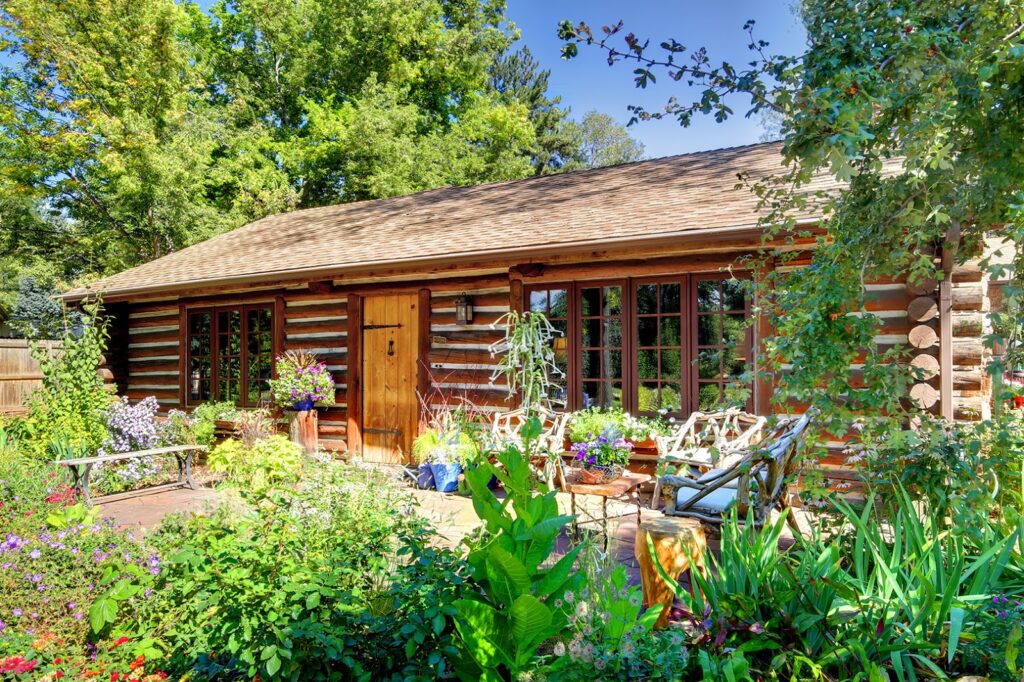Gardening for the Birds
- 2023-07-01
- By mkirk
- Posted in Horticulture, The Garden Buzz
By Pam Rosendal, Colorado Master Gardener

By all reports, the number of people engaged in birdwatching doubled during the pandemic. While numbers have recently dipped slightly, they are still substantially higher than before the pandemic. Research finds that birdwatchers feel less stress, anxiety and depression and report a greater sense of well-being. That’s no surprise to those of us who enjoy observing our feathered friends. It’s hard to imagine anything better than enjoying a bird-friendly, shade-grown coffee on the patio while listening to chickadees, finches and robins or, in my backyard, crows raising their young. Their calls are by no means melodious, but they are absolutely fascinating to watch.
Sadly, birds are experiencing the devastating effects of climate change and habitat loss. According to a study by the Cornell Lab of Ornithology, North America has lost nearly 3 billion birds since 1970. Closer to home, grassland bird populations have decreased by 53% or 720 million birds. These losses will only continue to grow in the future. Fortunately, we can take simple steps to make our outdoor spaces bird friendly and support bird populations well into the future.
The foundation of any bird-friendly garden is native plants. Native flora provide birds with natural sources of food, such as berries, fruits, and nectar, while also supporting the insect population that serves as a vital protein source for many bird species. When choosing plants, opt for a variety of species that bloom and bear fruit at different times throughout the year, ensuring a consistent food supply. Additionally, native plants are adapted to the local climate, requiring minimal maintenance and reducing the need for pesticides and fertilizers that can harm birds. Don’t have a yard? You can still help birds with a native plant container garden on your balcony or patio. No oasis is too small to support migrating birds along their arduous journeys.

A clean water source is essential to attract birds. Installing birdbaths, shallow pools, or even a small pond can offer birds a place to drink, bathe, and cool off. The water feature should be designed with safety in mind, incorporating shallow areas for easy access and smooth rocks or branches for perching. Regular maintenance is crucial to avoid stagnant water and to keep the water source clean. (Audubon offers tips for cleaning birdbaths.) Consider adding a drip or misting system near the water feature to mimic rainfall, which can attract insect activity and further entice birds to visit. Hummingbirds especially enjoy a mister.
When gardening for the birds, it is important to provide suitable shelter and nesting sites. Trees, shrubs, and dense vegetation can offer protection from predators, extreme weather conditions, and serve as roosting areas. Choose plant species that give a variety of heights, canopy shapes, and foliage density to cater to different birds’ preferences. Native species are preferable. Dead trees or snags are also valuable spaces for cavity-nesting birds like woodpeckers and chickadees. Consider including birdhouses or nest boxes designed for specific bird species found along the Front Range. They can compensate for natural habitat loss and provide safe spaces for breeding and raising young.
Reducing or eliminating the use of pesticides in the landscape is crucial for bird conservation. Pesticides not only directly harm birds but also impact their food sources by reducing insect populations. To put this in perspective, it takes 6,000 to 9,000 caterpillars to raise one clutch of chickadees. Adult hummingbirds eat nearly 2,000 insects daily. Explore alternative methods for pest control, such as integrated pest management techniques, which emphasize biological control and the use of organic products. Implementing companion planting strategies and encouraging beneficial insects can help naturally manage pests, creating a healthier environment for birds and other wildlife.

To learn more about creating a bird haven in your landscape, these Extension resources are a good place to start. Audubon Rockies offers plentiful support through its Habitat Hero program, including instructional videos and garden design ideas. The Colorado Native Plant Society has a wealth of information about native plants. Be sure to check their events calendar for workshops, webinars, field trips and more. Cornell Lab of Ornithology’s All About Birds will help identify the birds visiting your yard. Their Merlin app is a must-have. Xerces Society, an authority on insects, hosts webinars and opportunities to join community science projects. Their list of native plants for pollinators and beneficial insects is available for download.
Horticulture Resources
- Garden Buzz Archives
- CSU Extension Resources
- Colorado Master Gardener Program
- Foothills to Plains Native Plant Master Program
- Native Bee Watch Community Science Program
- The Co-Hort Blog
- PlantTalk Colorado
- Soil Testing
- Plant Select
- Emerald Ash Borer
- Japanese Beetle
- Colorado State Forest Service
- Ask an Expert


